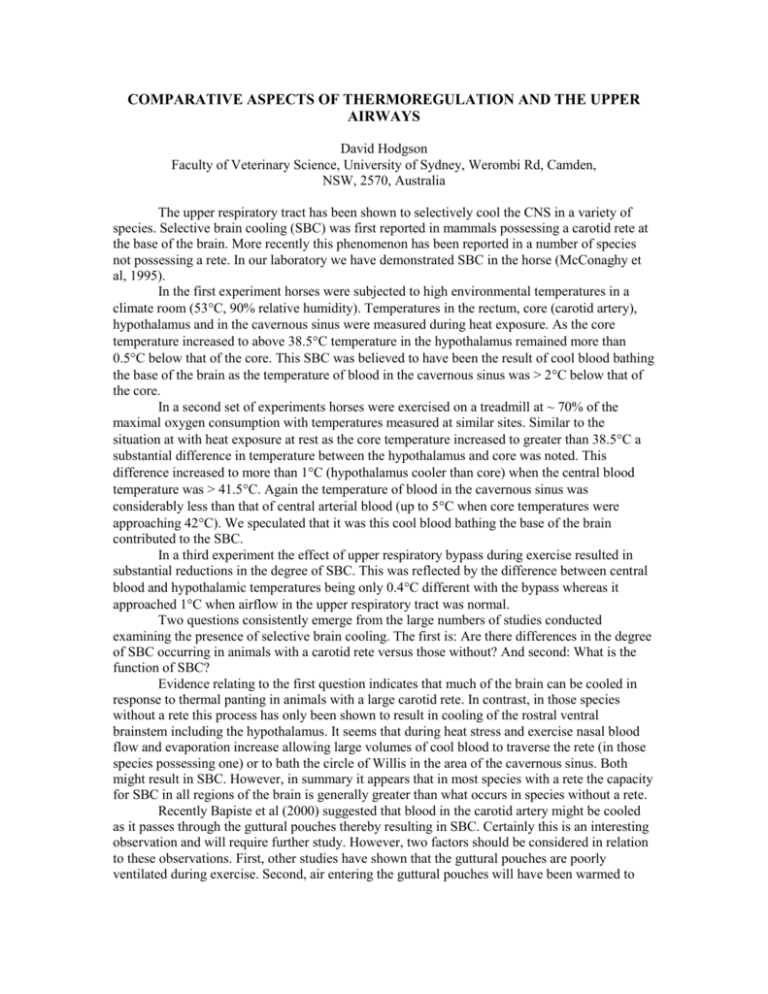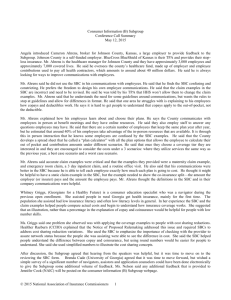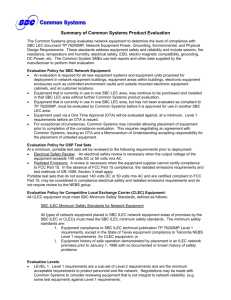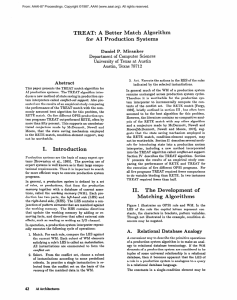comparative aspects of thermoregulation and the upper
advertisement

COMPARATIVE ASPECTS OF THERMOREGULATION AND THE UPPER AIRWAYS David Hodgson Faculty of Veterinary Science, University of Sydney, Werombi Rd, Camden, NSW, 2570, Australia The upper respiratory tract has been shown to selectively cool the CNS in a variety of species. Selective brain cooling (SBC) was first reported in mammals possessing a carotid rete at the base of the brain. More recently this phenomenon has been reported in a number of species not possessing a rete. In our laboratory we have demonstrated SBC in the horse (McConaghy et al, 1995). In the first experiment horses were subjected to high environmental temperatures in a climate room (53C, 90% relative humidity). Temperatures in the rectum, core (carotid artery), hypothalamus and in the cavernous sinus were measured during heat exposure. As the core temperature increased to above 38.5C temperature in the hypothalamus remained more than 0.5C below that of the core. This SBC was believed to have been the result of cool blood bathing the base of the brain as the temperature of blood in the cavernous sinus was > 2C below that of the core. In a second set of experiments horses were exercised on a treadmill at ~ 70% of the maximal oxygen consumption with temperatures measured at similar sites. Similar to the situation at with heat exposure at rest as the core temperature increased to greater than 38.5C a substantial difference in temperature between the hypothalamus and core was noted. This difference increased to more than 1C (hypothalamus cooler than core) when the central blood temperature was > 41.5C. Again the temperature of blood in the cavernous sinus was considerably less than that of central arterial blood (up to 5C when core temperatures were approaching 42C). We speculated that it was this cool blood bathing the base of the brain contributed to the SBC. In a third experiment the effect of upper respiratory bypass during exercise resulted in substantial reductions in the degree of SBC. This was reflected by the difference between central blood and hypothalamic temperatures being only 0.4C different with the bypass whereas it approached 1C when airflow in the upper respiratory tract was normal. Two questions consistently emerge from the large numbers of studies conducted examining the presence of selective brain cooling. The first is: Are there differences in the degree of SBC occurring in animals with a carotid rete versus those without? And second: What is the function of SBC? Evidence relating to the first question indicates that much of the brain can be cooled in response to thermal panting in animals with a large carotid rete. In contrast, in those species without a rete this process has only been shown to result in cooling of the rostral ventral brainstem including the hypothalamus. It seems that during heat stress and exercise nasal blood flow and evaporation increase allowing large volumes of cool blood to traverse the rete (in those species possessing one) or to bath the circle of Willis in the area of the cavernous sinus. Both might result in SBC. However, in summary it appears that in most species with a rete the capacity for SBC in all regions of the brain is generally greater than what occurs in species without a rete. Recently Bapiste et al (2000) suggested that blood in the carotid artery might be cooled as it passes through the guttural pouches thereby resulting in SBC. Certainly this is an interesting observation and will require further study. However, two factors should be considered in relation to these observations. First, other studies have shown that the guttural pouches are poorly ventilated during exercise. Second, air entering the guttural pouches will have been warmed to near body temperature and humidified in the nares thereby reducing the cooling capacity for any air that might enter the pouch. What is the function of SBC? No doubt the answer is related to the first question. SBC has been viewed as a mechanism for protecting the brain against overheating thereby expanding the capacity for increases in deep body temperature in response to heat exposure and exercise. Certainly one advantage, for example demonstrated in the camel, would be to allow the core temperature to increase substantially during heat stress thereby conserving water as the need for whole body cooling is diminished. What is clear is that the protective function of SBC will only be significant if the whole brain is cooled. The protective effect of cooling only the base of the brain is yet to be fully elucidated. Goats have been shown to tolerate CNS temperatures of 42C without adverse effects. This observation may be interpreted to suggest that while the CNS may be more liable to thermal damage than other organs it may not be as heat sensitive as considered previously. Thus, Kuhnen and Jessen (1991) have suggested that the role of SBC may be greater than just protecting the brain during hyperthermia. These authors suggest that SBC has effects thermoregulatory function in many parts of the body (a process allowing thermoregulatory ‘fine tuning’) thereby resulting in an increase in the zone of core temperatures where costly heat loss and heat production processes would otherwise be invoked. Additionally, these authors demonstrated rapid responses in the degree of SBC, prior to any change in core temperature, when environmental conditions were changed e.g., changes in the ambient temperature and humidity. Again this would support the role of SBC in thermoregulatory ‘fine tuning’ and would help explain a physiological role for selective hypothalamic cooling (as opposed to whole brain cooling) in species without a carotid rete. References Baker, M.A. (1982). Brain cooling in endotherms in heat and exercise. Ann. Rev. Physiol. 44: 8596, Baptiste, K.E., Naylor, J.M., Bailey, J, Barber, E.M. and Post, K. (2000). A function for the guttural pouches in the horse. Nature. 403: 382-383. Kuhnen, G. and Jesssen, C. (1991). Threshold and slope of selective brain cooling. Pfluegers Arch. 418 176-183. McConaghy F.F., Hales, J.R.S., Rose, R.J. and Hodgson, D.R., (1995). Selective brain cooling in the horse during exercise and environmental heat stress. J. Appl. Physiol. 79: 1849-1854.









